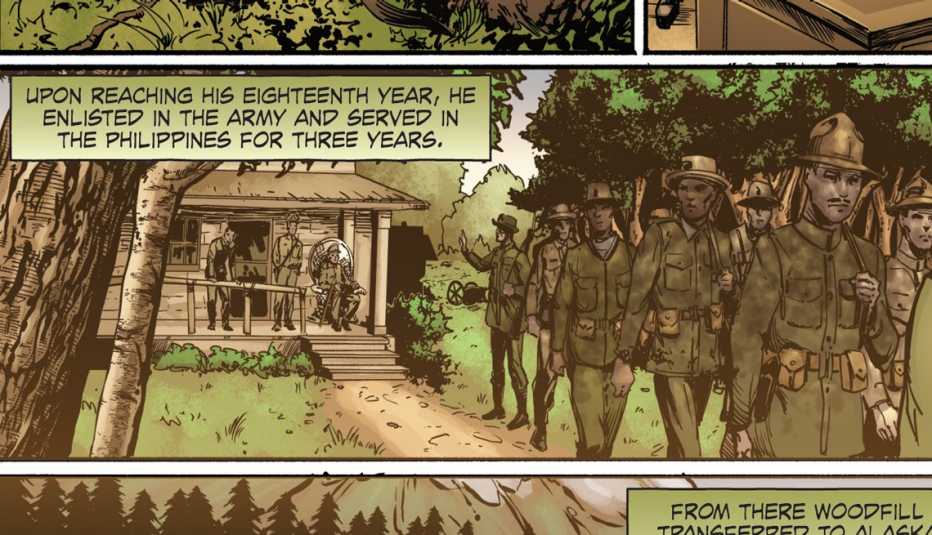AARP Hearing Center


New York’s 369th Infantry — the Harlem Hellfighters— is now legendary. An all-Black regiment, it was among the most feared and highly decorated groups of soldiers in World War I, earning more than 170 Croix de Guerre medals.
But the story of the Hellfighters had been largely forgotten until novelist and comic-enthusiast Max Brooks — best known for his best-selling graphic novel “World War Z” which inspired the Hollywood zombie blockbuster — brought the 369th back to life in his 2014 graphic novel, “Harlem Hellfighters.”
“I’d been waiting for over 40 years for a Harlem Hellfighters story,” Brooks told AARP Experience Counts , explaining that he’d first heard their story from a friend as a young boy obsessed with comic books. “I’ve seen stories about the 54th Massachusetts, the Buffalo Soldiers, and the Tuskegee Airmen come, and kept thinking, where are the Harlem Hellfighters?”
In 2015, Sgt. Henry Johnson, a Hellfighter who had died in 1929 in poverty and obscurity, was awarded a posthumous Medal of Honor.


You can subscribe here to AARP Experience Counts, a free e-newsletter published twice a month. If you have feedback or a story idea then please contact us here.
Graphic novels are a powerful medium for preserving military history. The Association of United States Army (AUSA) has commissioned a series of graphic novels honoring Medal of Honor recipients, from Jacob Parrott in the Civil War to Sal Giunta in Afghanistan AUSA has hired some of the biggest names in the business, including Chuck Dixon of DC Comics and illustrator Geof Isherwood.
Isherwood told AARP Experience Counts that he was thrilled to be work with Dixon, a comic book legend, and that one of the biggest challenges was getting the small details right.
“I tried to be as accurate as I could,” Isherwood said. “If we depicted the uniforms to weapons to tanks and jets wrong, any of it, the legion of vets who read the comic would tune out. There was quite a responsibility that came with that, much more than doing what we could on any normal Marvel comic to produce professional work.”
Maximilian Uriarte, 36, a writer, illustrator and Marine combat veteran, began sketching after his first deployment to Iraq and came up with the origins of what would become “Terminal Lance” in 2010. It started as a joke but soon took off and became a cultural phenomenon.
He wanted to parlay the success of “Terminal Lance” into something bigger, which would tackle more serious issues that plagued him.



































































More From AARP
Gary Sinise Salutes America’s Medal of Honor Recipients
These humble heroes wear the medal not for themselves, but for those who did not make it homeWWII Diary Reveals Iwo Jima Battle
A sailor on board the USS Arkansas left a remarkable historical record7 Best War Books You’ve Never Heard Of
Here are some obscure classics the veteran bibliophile should seek out
Recommended for You